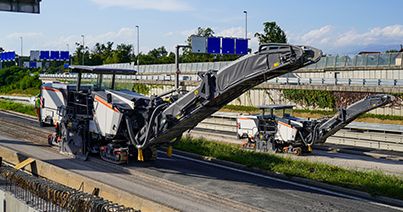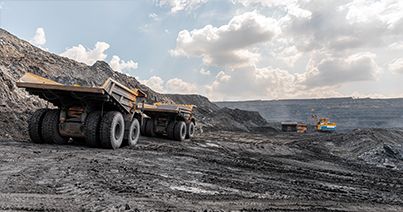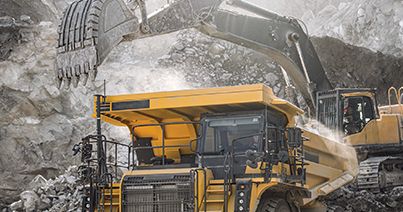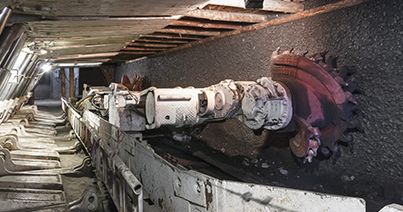
Underground mining procedures in the United States are filled with federal and state regulations to ensure safety, environmental protection, and fair labor practices. These highly complex regulations build a framework governing underground mining operations and significantly impact the industry. This blog explores key regulations, some of the challenges companies face in achieving compliance, and best practices for managing the costs and regulatory requirements that can incur on your business.
REGULATORY OVERVIEW
Major federal and state regulations affect underground mining in the USA. The Mine Safety and Health Administration (MSHA) and Environmental Protection Agency (EPA) guidelines are two primary regulatory bodies overseeing underground mining.
The MSHA enforces compliance with safety and health standards to minimize hazards, protect life, and prevent injuries in the nation’s mines. The (EPA) enforces a wide range of environmental laws to protect human health and the environment.
Key Regulations for Underground Mining Include:
The Federal Mine Safety and Health Act of 1977 (Mine Act)
This act establishes mandatory safety and health standards for mines to prevent death, disease, and injury from mining and to promote safe and healthful workplaces for miners.
Implementation of the Mine Act includes:
- Regulations and Standards in 30 CFR Parts 1 – 199
- Rulemaking documents, including Proposed and Final Rules
- Technical Amendments to existing Regulations and Standards, and
- Notice documents that include Petitions for Modification of existing Standards, Information Collections, and Public Meetings.
For detailed regulations on the Mine Act, click here.
The Coal Mine Health and Safety Act (CMHSA)
This act specifically targets coal mining, setting forth comprehensive safety standards for the protection of life, health, and property in coal mines.
The Act discusses mandatory safety standards such as:
- Proper ventilation systems must be installed and maintained to control the accumulation of harmful gases, such as methane, and to ensure a supply of breathable air.
- Standards for roof control systems to prevent cave-ins and collapses, ensuring structural stability in underground mines.
- Regulations on the use, handling, and storage of explosives to minimize the risk of accidental detonations.
- Measures to control coal dust and silica dust levels to prevent respiratory diseases such as black lung (coal workers' pneumoconiosis) and silicosis.
- Implementation of noise control measures to protect miners from hearing loss and other noise-induced health issues.
The Clean Water Act (CWA)
This act regulates the discharge of pollutants into the waters of the United States and sets quality standards for surface waters.
Federal facilities have regulatory responsibilities under the Clean Water Act, which includes:
- Preventing water pollution
- Obtaining discharge permits
- Meeting applicable water quality standards
- Developing risk management plans, and
- Maintaining records.

COMPLIANCE CHALLENGES, COST, AND BEST PRACTICES:
There are many hurdles mining companies encounter in meeting with compliance regulations. This includes health and safety compliance, environmental protection, and reporting requirements. Here, we delve into some common problems and provide some best practices.
Common Challenges
- Regulations are complex and require specialized knowledge to understand and implement. Standards can change frequently and keeping up with these changes can be difficult. This can be particularly challenging for smaller mining operations that may lack the necessary resources.
- Technological advancements in mining techniques can outpace regulatory changes, leading to a gap between practice and regulation. By staying on top of technology, your business can potentially reduce costs in the long run.
- Balancing the need for mining with environmental conservation is a significant challenge. Mining operations must comply with environmental regulations, which can be stringent and vary across states
Cost of Compliance
Non-compliance with mining regulations can result in hefty fines and penalties. The cost of these fines can be substantial, potentially running into millions of dollars for serious violations.
- Compliance often requires mining companies to make operational adjustments. This could include investing in new safety equipment, implementing more rigorous training programs, or modifying mining processes to reduce environmental impact.
- Regulatory compliance also involves ongoing monitoring and reporting. This requires investment in monitoring equipment and personnel and the administrative costs of preparing and submitting reports.
- Mining operations are often required to remediate any environmental damage they cause and to reclaim mined land after operations are complete. This can involve soil restoration, water treatment, and re-vegetation, all of which can be costly.
- The costs of compliance can also impact a mining company’s long-term financial planning. The potential for future regulatory changes adds an element of uncertainty and the potential for future fines or penalties.
- Non-compliance can lead to reputational damage and have indirect financial impact. A poor compliance record can make it more difficult for a mining company to secure financing, attract partners, or gain social license to operate in communities.
Best Practices
- Familiarize yourself with all relevant federal, state, and local regulations. Regularly review these regulations to stay updated as they can change over time.
- Conduct regular safety inspections and environmental audits. This can help identify potential issues before they become serious problems.
- Provide comprehensive training to all employees on safety procedures, environmental regulations, and emergency response plans. This not only ensures compliance but also promotes a culture of safety within the organization.
- Maintain open lines of communication with regulatory agencies. If you're unsure about a certain regulation or requirement, don’t hesitate to ask for clarification.
- Invest in technology to improve safety and compliance. This could include equipment for monitoring air quality, software for tracking compliance tasks, or machinery that reduces environmental impact.

STATE REGULATIONS:
State regulations can complement or exceed federal standards, often focusing on specific regional concerns. Changes are made to state legislation all the time, so keep up with your current state’s laws.
State legislative examples include:
California
- California Environmental Quality Act (CEQA): Requires environmental impact assessments for mining projects to identify and mitigate potential environmental damage.
- California Surface Mining and Reclamation Act (SMARA): Mandates that mining operations develop and implement reclamation plans to restore mined land to a beneficial use.
Nevada
- Nevada Division of Environmental Protection (NDEP): Enforces state-specific regulations for mine permitting, environmental monitoring, and land reclamation.
- Nevada Revised Statutes (NRS): Contains laws governing mining operations, including safety, environmental protection, and reclamation requirements.
Colorado
- Colorado Mined Land Reclamation Act: Regulates the reclamation of mined lands to ensure they are returned to beneficial use, including requirements for revegetation and erosion control.
- Colorado Department of Public Health and Environment (CDPHE): Oversees environmental regulations related to air and water quality, hazardous waste, and radiation control in mining operations.

Longwall Mining Shearer with Two Rotating Cutting Drums
UNDERGROUND MINING SOLUTIONS
Dedicated to meeting your toughest underground mining needs, Kennametal offers a range of underground mining tooling solutions. From drilling systems and KenCast wear parts to carbide bits/picks and related accessories, Kennametal experts can help guide you through each step of the underground mining process.
SUMMARY
Federal and state regulations governing underground mining in the USA are comprehensive and continually evolving. By understanding these regulations and implementing effective compliance and risk management strategies, mining companies can ensure they operate within legal frameworks, protect their workers, and minimize their environmental impact.
Related Articles
- Living on the Edge of PCD and Earth-Cutting OperationsTooling solutions are constantly being pushed to their limits against some of the toughest materials on the planet. PCD has emerged as a clear winner when it comes to durability and high performance. Find out more.Tooling solutions are constantly being pushed to their limits against some of the toughest materials on the planet. PCD has emerged as a clear winner when it comes to durability and high performance. Find out more.
- Adopting Eco-Friendly Practices in Surface MiningExtracting minerals and ores near the Earth's surface without harming the environment has always been a challenge. Here are some tips on how to reduce your carbon footprint and reduce disruptions to the environment.Extracting minerals and ores near the Earth's surface without harming the environment has always been a challenge. Here are some tips on how to reduce your carbon footprint and reduce disruptions to the environment.
- KenCast™ Mining Solutions: Breaking Through Abrasion Resistance in Crushing OperationsKennametal's KenCast™ sets new standards for abrasion resistance in ore production operations. Check out the results from one of our tests.Kennametal's KenCast™ sets new standards for abrasion resistance in ore production operations. Check out the results from one of our tests.



